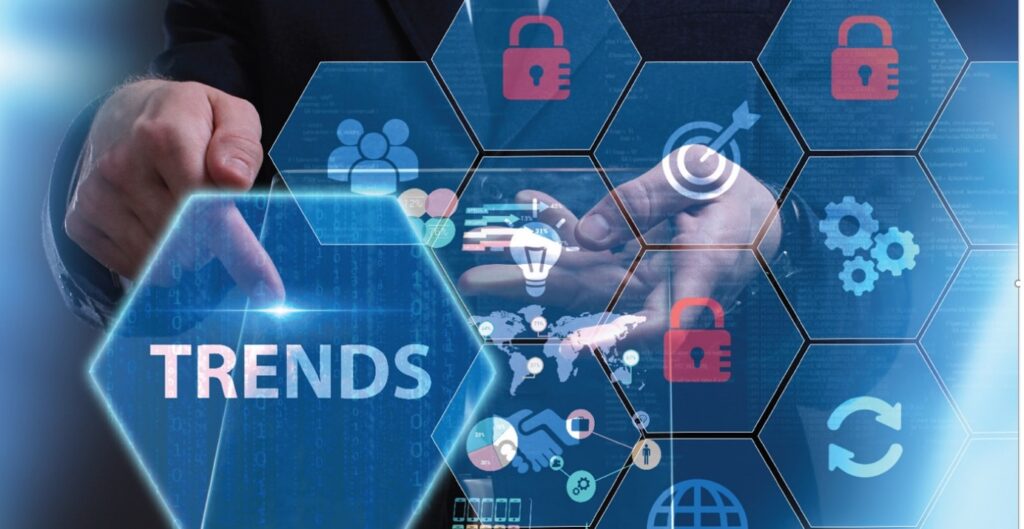In an era where the IoT use cases and associated technologies are evolving rapidly, it is crucial for the IoT-NGIN project to monitor key business and market trends that both impact and influence the IoT-NGIN landscape.
The European IoT ecosystem is also characterized by a number of emerging trends such as the growing focus on IoT security, and the rise of the industrial IoT (IIoT), which involves the use of IoT technologies in manufacturing and other industrial segments.
Complementing the contemporary key business trends for IoT, the EC Digital Agenda for Europe[1] among others indicates as main focal points for the decade 2020-2030, the development of Block-Chain technology, the human centric Artificial Intelligence, cybersecurity, 5G and 6G wireless networks and wider connectivity and Edge computing. Moreover, the IEEE survey[2] showcases important technological areas.
Security
Through the connection of billions of devices and the production of enormous volumes of data, the Internet of Things (IoT) has transformed industries all over the world. IoT systems are essential for handling and utilizing this data, facilitating seamless integration and releasing insightful knowledge. By 2024, there will be 15.1 billion linked devices, and there will be 25.2 billion by 2028[3]. IoT security is now more important than ever because of this expansion. Following this trend, IoT technology is also becoming part of more and more enterprise systems and even critical infrastructures. Cybersecurity is of paramount importance for any commercial IoT establishment and essential for critical infrastructure and industrial applications.
Data Analytics and AI
Currently, the exponential growth in the number of connected devices is opening up a new landscape of possibilities. In 2024, IoT platforms will take on new forms thanks to the fusion of IoT and AI/ML technology. Platforms will be equipped with AI and ML algorithms to mine massive amounts of IoT data for useful insights. Predictive maintenance, intelligent anomaly detection, and proactive decision-making are currently made possible by this connection enabling automation, optimization, and wise resource allocation.
Edge computing
A significant evolution in IoT applications in both commercial and research establishments concerns the location where the collected data are analysed and processed. The major computing power of IoT based systems has to date been mostly based on cloud platforms. Edge computing moves computing and processing resources closer to the location of data analysis and away from on-premises data centres. This allows for minimizing the network-imposed delay in communications and at the same time enhances security.
Wireless networks and wider connectivity
The convergence between IoT and 5G is one of the most promising trends regarding these two technologies in the coming years. Sensors will be connected through faster networks with higher bandwidth, reducing their current requirements for memory and processing power. This will help also to reduce energy consumption and to increase their lifespan. Moreover, many more devices will be connected to applications and will benefit from low latency mobile communications. The main application sectors expected to benefit from synergies between IoT and 5G technologies are mobility, IIoT and health.
References
[1] https://www.europarl.europa.eu/ftu/pdf/en/FTU_2.4.3.pdf
[2] https://www.ieee.org/about/news/2022/news-release-2022-survey-results.html
[3] https://www.statista.com/statistics/1183457/iot-connected-devices-worldwide/

